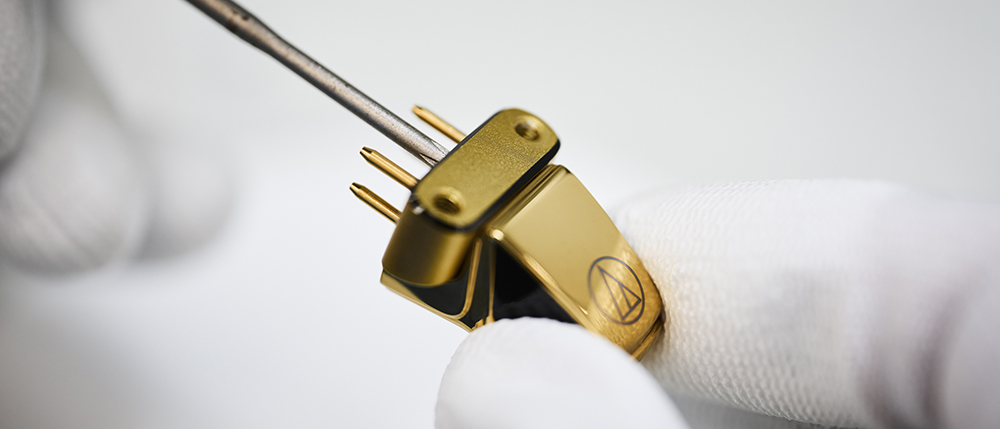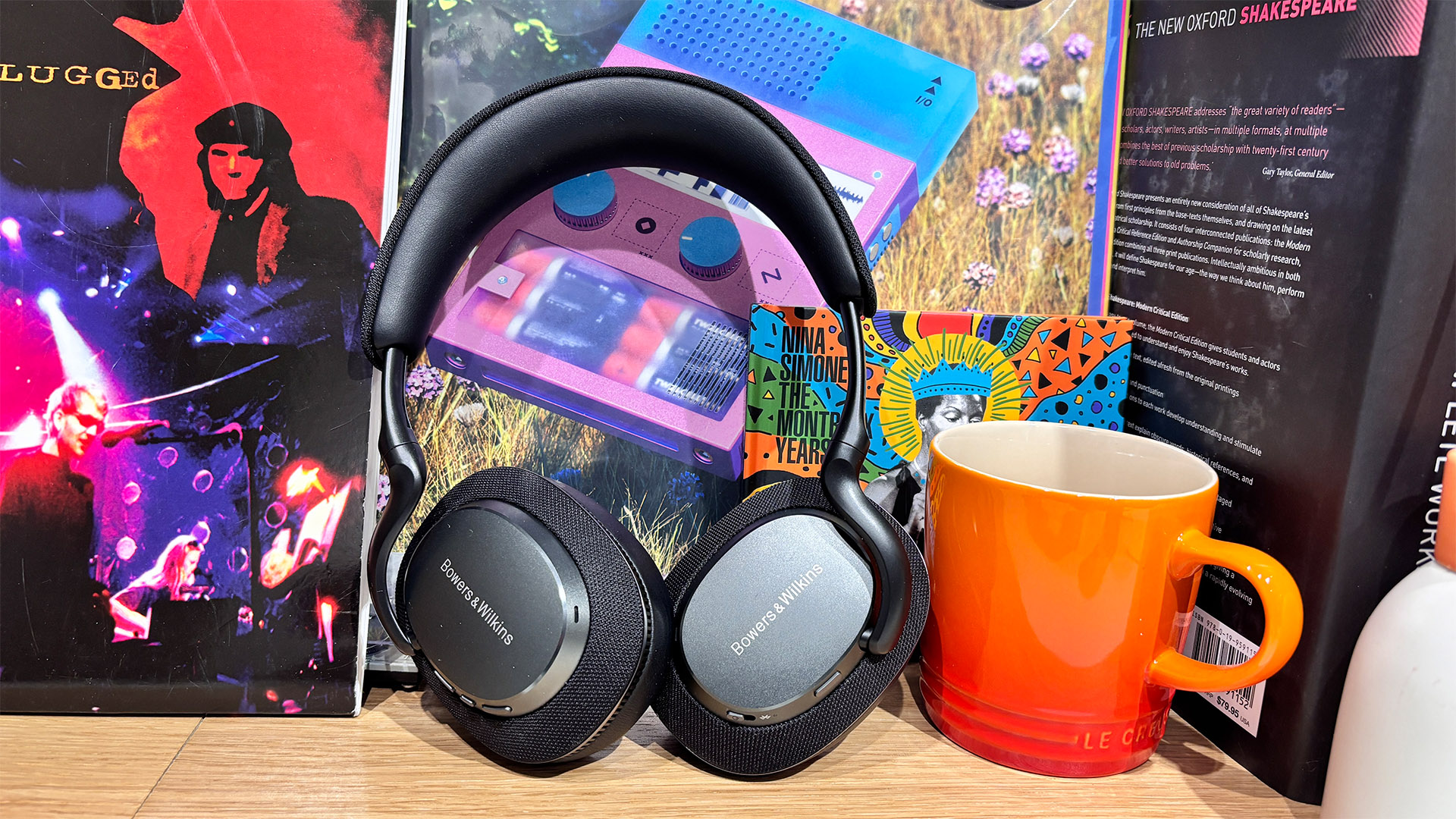What Hi-Fi? Verdict
Audio-Technica's 60th-anniversary moving-coil phono cartridge is very special indeed, with a unique construction and a stunning performance just as exclusive
Pros
- +
Scrupulously detailed
- +
Exemplary channel balance and separation
- +
Unique construction
- +
Vast accessories supplied
Cons
- -
Prohibitive price
Why you can trust What Hi-Fi?
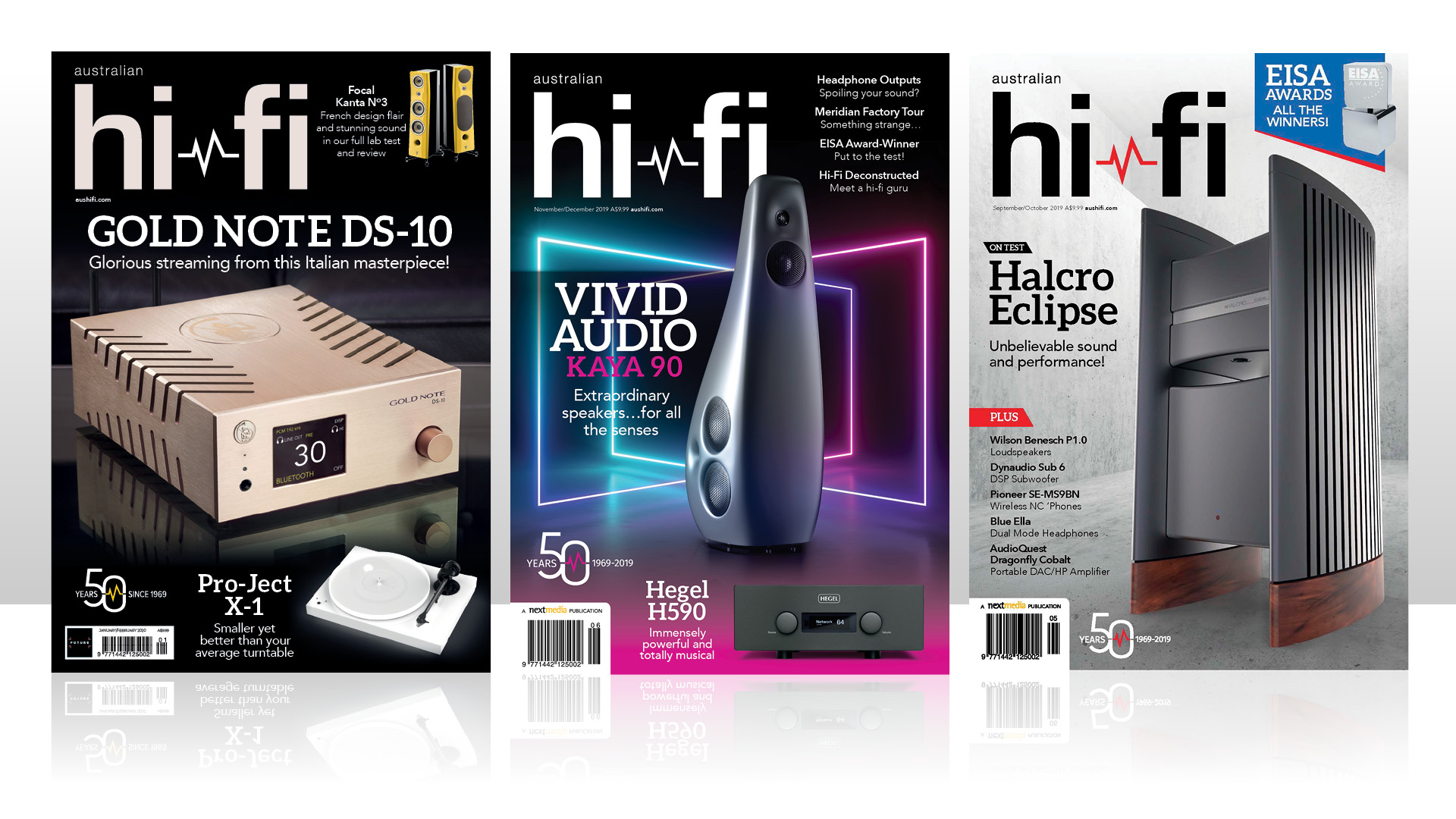
This review and test originally appeared in Australian Hi-Fi magazine, one of What Hi-Fi?’s sister titles from Down Under. Click here for more information about Australian Hi-Fi, including links to buy individual digital editions and details on how best to subscribe.
Audio-Technica’s newest moving-coil phono cartridge, the AT-MC2022, was released in 2022 to celebrate the famous Japanese company’s 60th anniversary, hence the model number. We were able to listen to the very first one to arrive in Australia, which landed here down under early this year.
It’s a rather special phono cartridge, as it’s built like no other we’ve ever heard of. Rather than the diamond stylus being ‘attached’ to the cantilever, which is the conventional method of building a phono cartridge, the diamond stylus in the MC2022 is not attached to the cantilever at all, but is actually a part of it: the stylus and the cantilever are unified, both formed from a single diamond. Audio-Technica says of this technique: “This unique construction eliminates the distortion caused by conventional bonding of stylus to cantilever, allowing for a purer transmission of the vibration from the record groove to the [two] coils. The very slim 0.22mm diamond cantilever ensures extremely high propagation velocity and fast transient response.”
Build and design
Of course, Audio-Technica is not the first company to produce a diamond cantilever: that’s been done before, initially for scientific instruments used in atomic force microscopy investigations (by NT-MDT Spectrum Instruments) and also by Japanese company Orbray (formerly known as the Adamant Namiki Precision Jewel Company). Danish company Ortofon sells phono cartridges that use a diamond cantilever (Verismo), as do Japanese companies Koetsu (Bloodstone Platinum) and Dynavector (17DX Karat Diamond).
In all the aforementioned cases, however, the diamond stylus is separate from the diamond cantilever – in fact, the stylus is simply glued to the cantilever using ethyl cyanoacrylate. Because ethyl cyanoacrylate is more commonly known as ‘superglue’, companies that use this technique either don’t mention the attachment method at all, or coyly state that the stylus is ‘bonded’ to the cantilever.
The problem with this particular ‘bonding’ method is, of course, that the movement of the diamond stylus has to first move the glue, after which the glue has to then move the cantilever (after which the cantilever has to move the two coils inside the cartridge body). This means that the transmission of vibration can never be instantaneous. As a very rough analogy, imagine a wooden broom whose brush element is rigidly attached to the wooden handle. When you move the handle back and forth, the brush will move in unison. Now imagine what would happen if you cut the broom handle in half and then used a short length of rubber hosepipe to join the two halves. Good luck trying to sweep a floor with that!
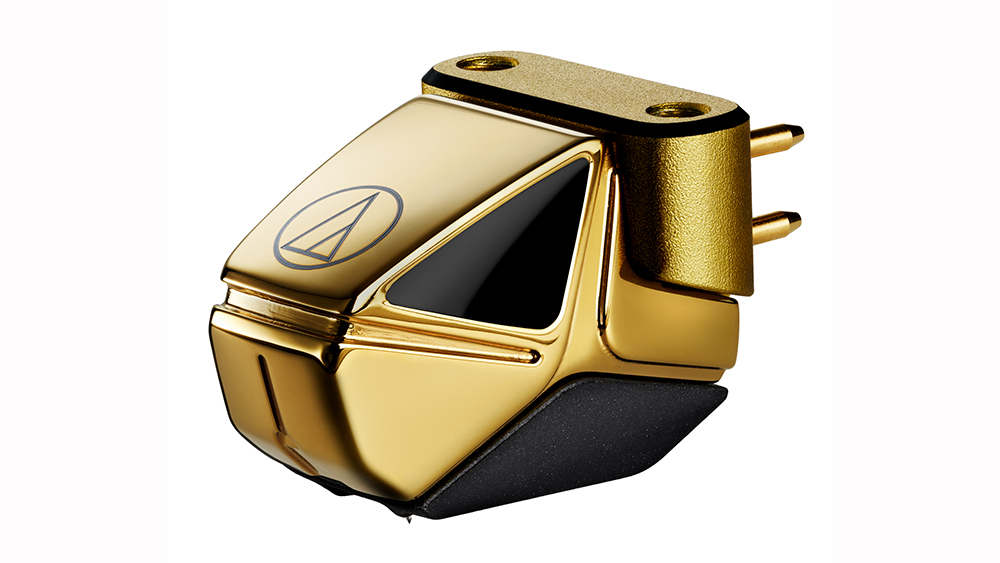
Despite the unique unified cantilever/stylus configuration that completely eliminates that potentially flexible joint, Audio-Technica does have to connect the other end of the cantilever to the dual coils. When we tried to ascertain how this was achieved in the MC-2022, Audio-Technica’s engineering department replied: “This is such an important part of the MC-2022’s construction that it is highly confidential and we are not at liberty to share the exact engineering drawing with you.”
However, if you look carefully at the exploded diagram on page 34 of this review which shows the Audio-Technica AT-MC2022’s construction, you can see there is a small section of what appears to be black piping that appears to fit around the cantilever and then inside the assembly that holds the left- and right-channel coils (as shown within the red ellipse). We would assume that this piping is both press-fitted and glued… but we hasten to make clear that this is merely our assumption – our description of what might be going on is not based on anything provided by Audio-Technica.
It is very important to note that unlike most cantilevers, which are cylindrical, the one in the AT-MC2022 has a square cross-section (0.22mm square), so we are also presuming that the ‘black piping’ is also square because this design would allow superb alignment of parts, plus there would be none of the torsional forces that would otherwise adversely affect a cylindrical cantilever.
As for the dual-coil/magnet assembly in the AT-MC2022, it is derived from the magnetic circuit that Audio-Technica developed for the AT-ART20, which was in turn derived from the one it developed for the AT-ART9XI. The primary difference was that the front yoke was 0.6mm thicker, which improved magnetic flux density, increasing efficiency such that output voltage was improved by more than 15 per cent in the AT-ART20 despite that cartridge using the same number of coil turns as the AT-ART9XI.
The Achilles’ heel in the AT-MC2020’s design is the same one that it shares with all moving-coil cartridges, which is that when the stylus wears out (which it inevitably will if you use it), it is not possible to simply slide in a new stylus assembly, as you could with a moving-magnet cartridge. You instead have to send the entire cartridge back to the manufacturer to have the stylus replaced. This, as you would imagine, is a costly process that, in the case of the Audio-Technica AT-MC2022, is priced at 70 per cent of the cartridge’s price. This means that since the AT-MC2022 is currently retailing for £8999 / $9000 / AU$15,999, the cost of replacing the stylus would be something like £6300 / $6300 / AU$11,200 (plus shipping in both directions, as well as insurance.)
But there are added complications when it comes to replacing the stylus on the AT-MC2022. Firstly, as this is a limited edition model, very few of them will ever be built. A further complication is that with most moving-coil cartridges, replacing the stylus is complicated but nonetheless doable because the worn diamond can be removed from the cantilever and a new diamond ‘bonded’ (!) to the cantilever. It’s so doable, in fact, that quite a few third-party companies (Australia’s own Garrott Bros, for one) offer to replace worn diamond styluses irrespective of the manufacturer of the original cartridge because diamond styluses are easy to acquire (if not quite so easy to fit!).
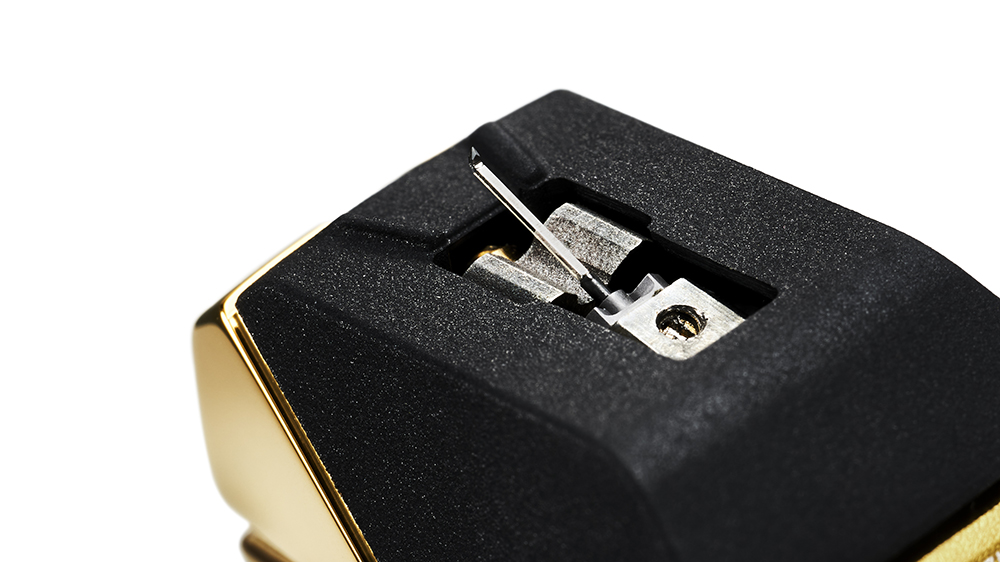
However, the AT-MC2022 is a special case because you cannot replace the stylus alone but instead have to replace the entire stylus/cantilever assembly, which is not only more difficult but further burdened by the fact that the only place this assembly could be obtained is from Audio-Technica itself, which would of course be unlikely to supply it to third parties. This means you need to work with Audio-Technica Japan’s turnaround time (currently one month) as well as trust that it will have sufficient stock of this part to enable the replacement process to continue into the foreseeable future.
And, just in case you were wondering, that generous three-year warranty Audio-Technica guarantee for the AT-MC2022 does not cover stylus wear! According to Audio-Technica Japan, it covers scenarios such as “stylus misalignment” or “broken internal fragile wires”.
All of which begs the question of how many hours you can play your albums for before a diamond stylus will be sufficiently worn as to require replacement, and the answer to this will depend on who you ask. Famous company Shure, which has been in the phono cartridge business longer than most (since 1925, in fact), skirts the issue with the advice that “typically, if the sound quality has become dulled or not as pristine as originally, then you should replace it. Only the use of a microscope can accurately tell when a stylus needs replacement as flat spots will appear on the diamond tip”. It then continues to offer more definitive advice: “If you think you have more than 500 hours of playing time on your stylus, it is time to consider a new one.”
However the rate at which your stylus wears also depends on the condition of the LPs you play, the playback speed (33.33 or 45rpm) and your sensitivity to the type of distortion that typically arises as a result of the stylus becoming worn (initially a slight fuzziness in the highest frequencies). Because of this, some estimates of expected playback time extend to 1000 hours. If we take this higher figure, and an average playing time of 40 minutes per LP, you’d be able to play 1500 albums before having to think about replacing your stylus. We would recommend regularly inspecting your stylus using a USB microscope (or having your hi-fi retailer do it for you) as well as trying to keep track of the number of LPs you play per week.
As you’d expect, the Audio-Technica AT-MC2022 comes with a complete set of accessories, including a non-magnetic screwdriver, a stylus brush, eight cartridge installation screws (two 5mm-long, two 8mm, two 10mm and two 12mm), a beautiful wooden storage case (see below), and an accessory pouch. Of course, you only need to use two of the screws, but the length you will need depends on the headshell in which you will be installing the cartridge, and using the shortest possible screws will result in the lowest mass. It would have been nice if Audio-Technica had included a stylus down-force gauge (a balance type or electronic one), but we suppose you can’t expect to be handed everything on a platter.
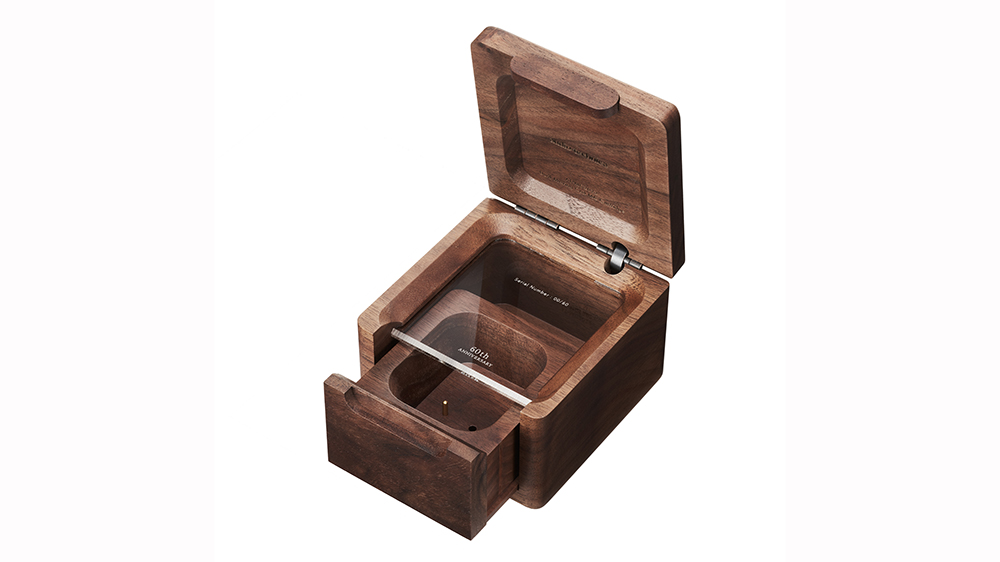
Performance
We started our listening sessions with one of the most famous test records of all time, the Sheffield Track Record, which has only around eight minutes of playing time per side, so you know that it will be more dynamic than any other album you may have heard, and will test the compliance of a phono cartridge; if a stylus can correctly track the Sheffield Test Record, it will be able to track any LP.
Side 1’s very first track, Amuseum, was all we needed to hear to know that the AT-MC2022 was a superior reproducing device. The drum sound in particular was monumentally good – possibly the best we have ever heard from any phono cartridge. Lenny Castro’s percussion was very clearly in a different space, and the dying fall of the synthesiser notes was clearly evidenced, even despite the volume falling far below that of other instruments being played at the same time.
Our experience of dynamism was made even more palpable with the only other track on Side 1, The Higher You Rise, though perhaps it’s the fabulous sound of Nathan East’s bass guitar that is the highlight of this track. Again, the AT-MC2022 made it sound superb, and able to do so whilst simultaneously delivering Castro’s effervescent hi-hat sonics.
We couldn’t not flip sides, of course, to hear Wise to the Lines and its fantastic percussion/synth intro, which was duly delivered against a perfectly silent background. The Audio-Technica cartridge has a magical way of seeming to mute any surface noise that might be present on an LP, delivering CD-like backgrounds. The final track, with its lovely keys melody, made Le Ballade a great way to close out this part of the session.
Listening to Michael Kiwanuka’s self-titled album from 2019, we couldn’t help but admire the AT-MC2022’s delivery of the entire album, in particular our favourite track, Hard To Say Goodbye. The authenticity of the bird chirps around 1:50 in, the realism of Kiwanuka’s vocal delivery, the sound of his acoustic guitar, complete with fret noises, not to mention the sub-bass... it was all amazingly delivered.
We had to hear how the AT-MC2022 delivered one of the most famous ‘signature’ female vocalists of all time, so it was back in time to Betty Davis’ self-titled 1973 album. Very shortly into the intro of If I’m In Luck I Might Get Picked Up, we revelled in the grunginess of her uniquely scratchy and totally distinctive voice. Unlike lesser phono cartridges, the AT-MC2022 was able to deliver the sharpness and crispness of her delivery without even a hint of sibilance.
Perhaps even more tellingly of the AT-MC2022’s ability to reveal subtleties is the way we could hear how Neal Schon takes over from Doug Rodrigues and when Richard Kermode takes over duties on keys from Greg Errico. The difference in finger-touch is made very clear by the Audio-Technica cartridge.
A decade ago James Blake amazed us with his album Overgrown, and in 2023 the AT-MC2022 amazed us all over again with the purity with which it was able to deliver what is truly a 3D soundfield, and not least on the most incredible track from this album, Retrograde. The humming on the track was so realistic that we thought one of us was actually playing a trick by humming along with the album! (They weren’t.)
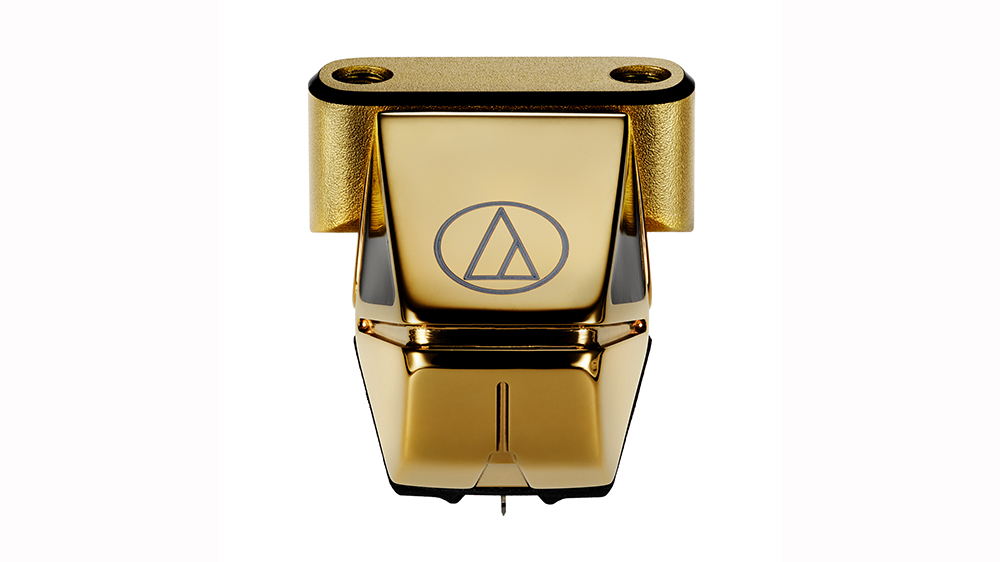
The AT-MC2022’s amazing channel separation was clearly evidenced on Take A Fall, with the different vocalists perfectly isolated in their respective channels, while the spectral separation was such that the deep bass FX didn’t modulate the vocals at all. The purity of the female vocals was enchanting – just as it should be.
As for the AT-MC2022’s channel balance, just listen to D’Angelo’s album ‘Voodoo’, which is not only a testament to the exact channel matching of the Audio-Technica AT-MC2022 but also to the sonic accuracy delivered by ‘old-school’ analogue recording techniques and vintage mixing gear. You’d never imagine that Voodoo was recorded in 2000, which is a true credit to the skills and philosophy of D’Angelo’s audio engineer Russell Elevado. The phase accuracy on Playa Playa is perfect, as is the equality of the volume levels in the channels.
Both these attributes are essential to ensure that you will hear Devil’s Pie sounding exactly as D’Angelo wanted it to sound. The panned high-frequency synth sounds work beautifully against the grungy bass line, syncopated finger snaps, disco scratching and funky chorus. It’s an aural feast that truly captures the imagination.
Verdict
The fact that you’ll have to write a cheque for £8999 / $9000 / AU$15,999 to take possession of your very own Audio-Technica AT-MC2022 phono cartridge, and then another one for a good chunk of that figure every time you need to replace its stylus, is really all you need to know to decide whether or not you can afford one. But if you can afford one, you need one, as it’s undoubtedly the best-sounding, highest-performing phono cartridge in the world.
MORE:
How to change the cartridge on your turntable
Read our five-star Vertere Sabre MM cartridge review
Best cartridges 2023: budget and premium options for your turntable
Australian Hi-Fi is one of What Hi-Fi?’s sister titles from Down Under and Australia’s longest-running and most successful hi-fi magazines, having been in continuous publication since 1969. Now edited by What Hi-Fi?'s Becky Roberts, every issue is packed with authoritative reviews of hi-fi equipment ranging from portables to state-of-the-art audiophile systems (and everything in between), information on new product launches, and ‘how-to’ articles to help you get the best quality sound for your home. Click here for more information about Australian Hi-Fi, including links to buy individual digital editions and details on how best to subscribe.
